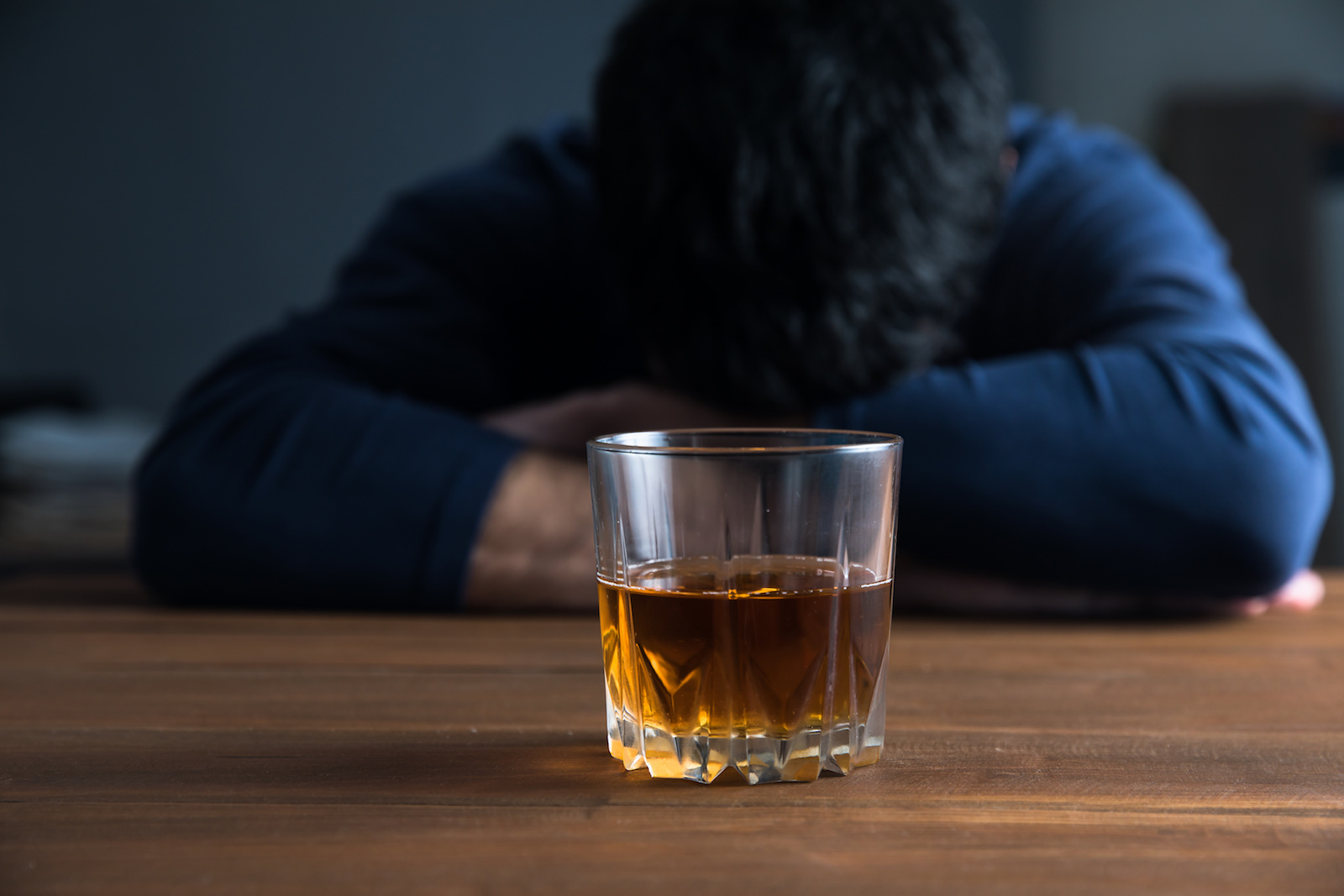
Alcohol is one of the most widely abused substances in the US. Most people who end up with serious cravings for alcohol started off with relatively innocuous occasional drinking, even in moderation. Individuals suffering from alcohol use disorder can have a wide variety of potential effects or alcohol use profiles.
The Diagnostic and Statistical Manual of Mental Disorder 5, or DSM-5, is used to evaluate behaviors and determine if the condition of alcohol use disorder exists. This is essential since as a mental health disorder it can have a wide range of presentation and visibility.
The DSM provides a standardized way to evaluate and potentially assist the diagnoses of many different mental health conditions. It provides those in the healthcare industry several factors that can help determine if alcohol use disorder is present, and if so, at what severity.
Why Am I Craving Alcohol?: Signs of An Addiction
In total there are 11 “conditions” that the DSM-5 and the American Psychiatric Association establish for the clinical investigation of possible cases of alcohol use disorder.
When using the DSM, the presence of just 2 factors within the last year means the individual is considered to have alcohol use disorder. Up to three symptoms constitute a mild severity, 4 to 5 is a moderate case, while 6 or more from the list indicates a severe case.
Symptoms can commonly be viewed as either mental, psychological, or behavioral changes that are felt by the individual or observed by a third party. Some symptoms will be present in more than one category for some people, depending on how they express or observe the symptom.
Mental Signs
- Impaired cognition – Impaired thinking and decision-making abilities are some of the most common signs that someone is having issues with alcohol.
- Memory impairment and damage – Since alcohol is technically a poison, it has a profound effect on the brain and can prevent effective memory creation and recall.
- Wanting to quit drinking – Those who have lived with cravings for alcohol for long enough will often express a desire to quit drinking. In those that don’t directly express it, in many situations someone close to them will be able to sense this.
- Denial of the extent of alcohol use or problem – When confronted about their potential cravings for alcohol, many people in the grip of addiction will become defensive and many will demonstrate outright denial. Severe denial can make treatment efforts challenging.
- Increased stress or panic about the potential of sobriety – When confronted with the potential of being in a situation where they will not be able or permitted to drink, they will frequently become agitated or anxious.
Physical Signs
- Increased tolerance to alcohol’s effects – Those who drink relatively often, even daily, will begin to notice that the amount they consume will start to affect them less and less. This means larger quantities or higher potencies of alcohol will be required to obtain the same effect.
- Poor coordination – Alcohol affects the body in ways that are immediately noticeable to those who are not intoxicated, and a significant reduction in coordination is one of the first to happen. Since alcohol can affect the vision systems, hand-eye coordination, as well as walking, are both hampered strongly by alcohol use.
- Slurred speech – The speech center in the brain is one of the areas that alcohol affects first when it is consumed, leading those under the influence to have the almost stereotypical slurring to their speech.
- Increased anxiety and emotional instability – When confronted with stressful or agitating situations, those individuals experiencing cravings for alcohol will frequently be more strongly affected. This can often result in damage to interpersonal dynamics, and the loss of employment or relationships.
- Tremors or other withdrawal symptoms – This is a primary way to determine if you have become dependent on alcohol, even if you do not feel like it. Sometimes it can be the only way of getting an unbiased answer, particularly when other symptoms don’t fit. If drinking can stop for 2 weeks at a time with no tremors, headaches, nausea, or any of the other withdrawal symptoms happening, then you are probably ok.
Behavioral Signs
- Inability to regulate drinking – Individuals living with cravings for alcohol will often not be able to stop themselves from buying and consuming alcohol. Even when they know that they will likely suffer negative consequences because of the drinking, they will still stop at the liquor store on the way home or get out that bottle of wine with dinner.
- Choosing to drink over putting energy into work, social, and personal relationships – This is one of the major behavioral changes that cause isolation of those with alcohol use disorder. When you choose to drink or to spend time with those that don’t mediate your drinking, you actively contribute to the negative consequences of that drinking on your relationships. It is not uncommon for friendships to end and for families to be shattered by alcoholism.
- Being secretive about the quantity or frequency of alcohol use – One of the strong indicating factors that someone is having a problem with controlling their alcohol use is hiding it. By making concerted efforts to obscure, hide, or lie about the amount of alcohol an individual is consuming they passively acknowledge that there would otherwise be a problem with the amount.
- Taking part in risky or dangerous behavior while under the influence, like drunk driving – Drunk driving is only one particular type of dangerous activity that those with cravings for alcohol are engaged in, but it is one of the deadliest. Individuals abusing alcohol may end up partaking in any one of many risky activities, including promiscuous sex and using other drugs.
Side-Effects of Craving Alcohol
Even though alcohol is largely legal and widely accepted, it is responsible for some relatively serious side effects. Side effects for alcohol use can begin to appear very soon after regular or heavy use. These side-effects are both short and long-term and can affect the mind and the body.
Even with the significant effect that alcohol has on the brain’s release of dopamine, it can cause dopamine to drop over longer periods. This can lead to the user feeling suddenly depressed or emotionally unstable, hopeless, sad, and restless.
Another side-effect that alcohol has on all users, both new and old, light and heavy, is its negative effects on the user’s sleep cycles. Alcohol disrupts the natural cycles of wakefulness, which can make falling asleep much more of a challenge. It can also relax the face and neck muscles so much that the user experiences sleep apnea.
If you are ever looking to shave a few years off of your face, quitting drinking is a great way. Drinking causes a chronic state of dehydration, as well as a shortage of facial collagen. Both of these situations contribute to a more saggy and wrinkly face, as well as the broken capillaries, swelling, and inflammation from the alcohol.
The Lasting Effects On Your Health
In some cases, heavy drinkers will be able to maintain some fashion of a cohesive life. By being what is referred to as “high functioning” they are often more capable of keeping their employment, finances, health, and relationships in relatively good order. Even they aren’t able to run away from the health effects that come from cravings for alcohol.
Abusing alcohol for many years can leave you open to many different health conditions and illnesses. These illnesses are often surrounding the circulatory system, mental health, and associated processes, as well as for a number of other organs and systems of the body. These can include:
- Anemia and general poor health
- Cancer of the mouth, stomach, and intestines
- Cirrhosis of the liver
- Dementia
- Seizures
- Emotional instability, in particular depression and aggression
- Elevated blood pressure and heart rate
- Increased risk of stroke
- Damage to the central and peripheral nervous systems
- Damage to the pancreas
- Gout flare-ups
- Acquisition of various infectious diseases due to damage to the immune system
Alcohol is a major contributor to comorbidity as well, and may seriously exacerbate any existing conditions. If there are dangerous conditions present, drinking will always make them more dangerous, or increase the risk associated with those conditions.
What To Do If You Start Having Cravings For Alcohol: Getting Help For An Addiction
If you or someone that you care about may be having a problem controlling their cravings for alcohol, it may be time to ask for help. In many situations, the individual is ready for help but doesn’t know where to go or who to ask.
Having professional help can make the difference, however, and those that get help with their detox and withdrawal phase may find that they can get through it more comfortably. This means a more solid foundation to build a continued recovery upon.
For any information or questions about your needs, reach out today and have a confidential conversation about your cravings for alcohol with one of our experienced addiction professionals.
OCEAN RECOVERY EDITORIAL GUIDELINES
The internet contains a vast amount of misinformation, but when it comes to your health only peer reviewed, research centered data matters. At Ocean Recovery, all content published throughout our website has been rigorously medically reviewed by a doctorate level clinician, and cross checked for medical accuracy. Our editorial process helps our readers trust that the information they are consuming is factual and based upon scientific data. Your health is our top priority, find out more about how we safeguard the integrity of information on our website. Read More About Our Process






